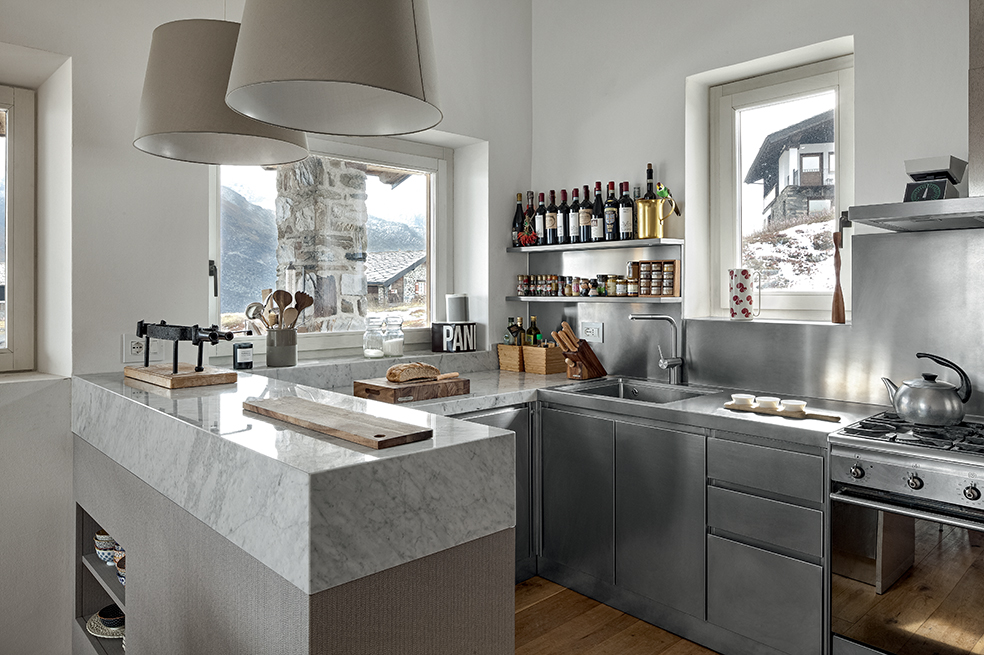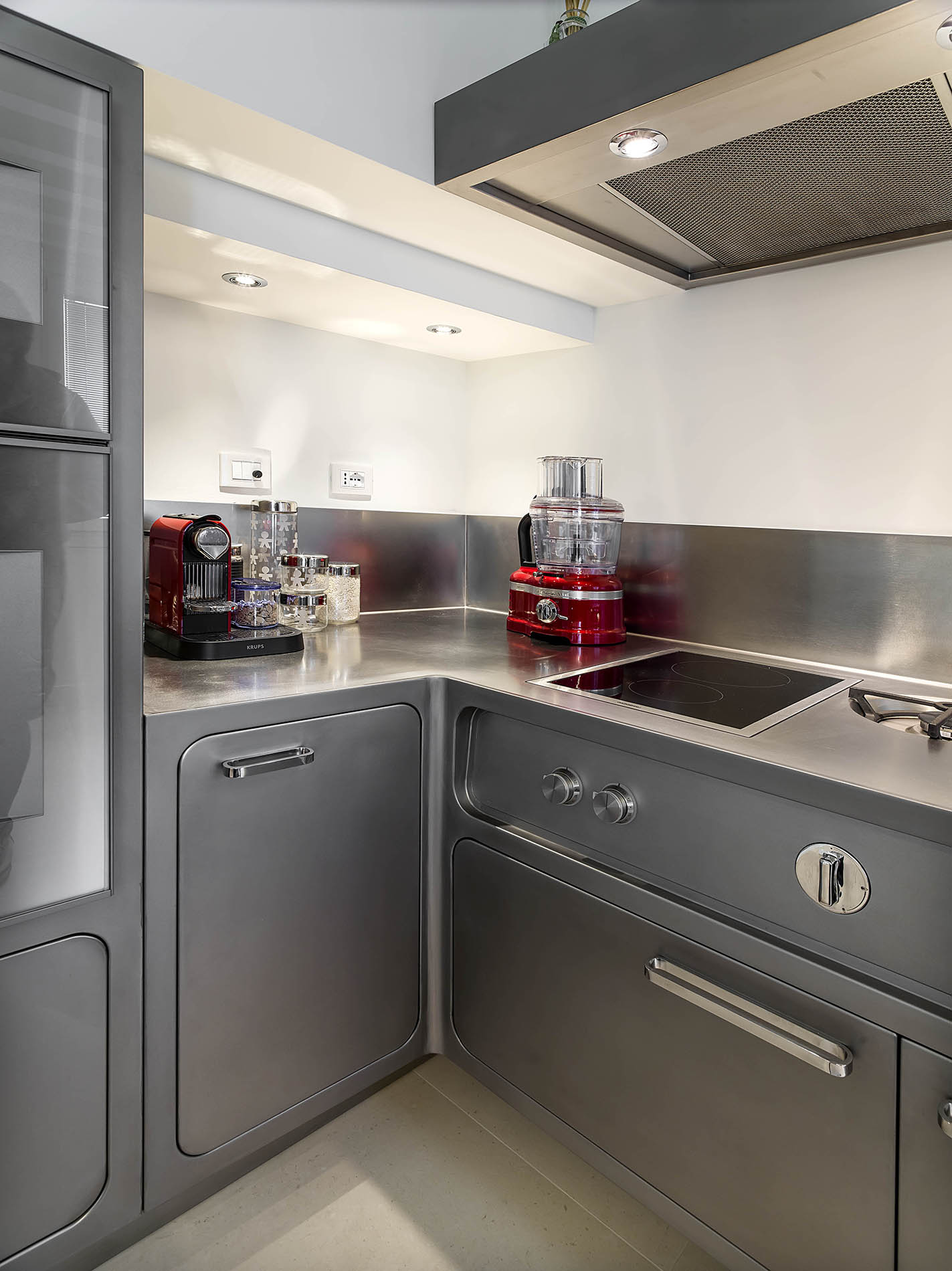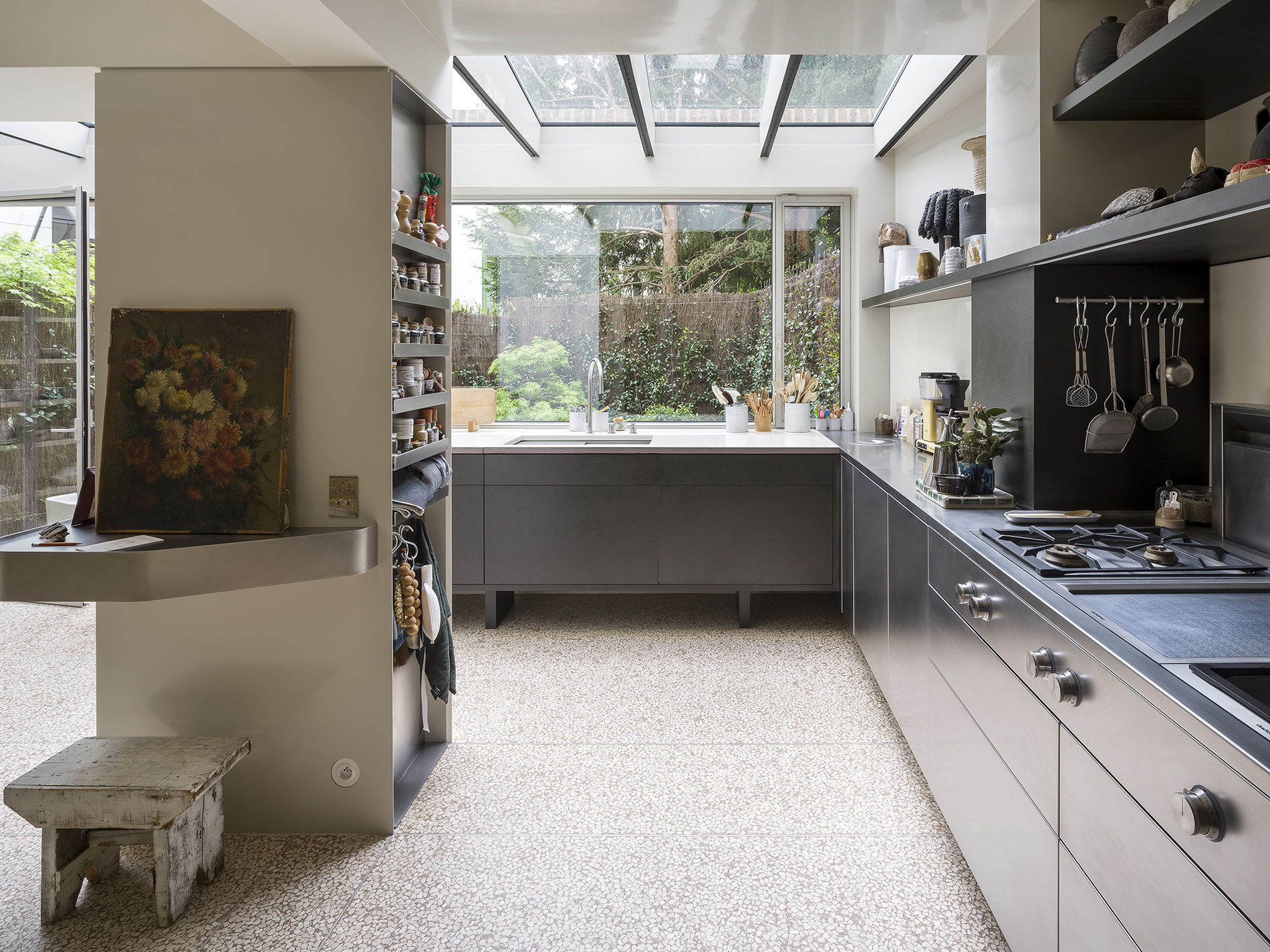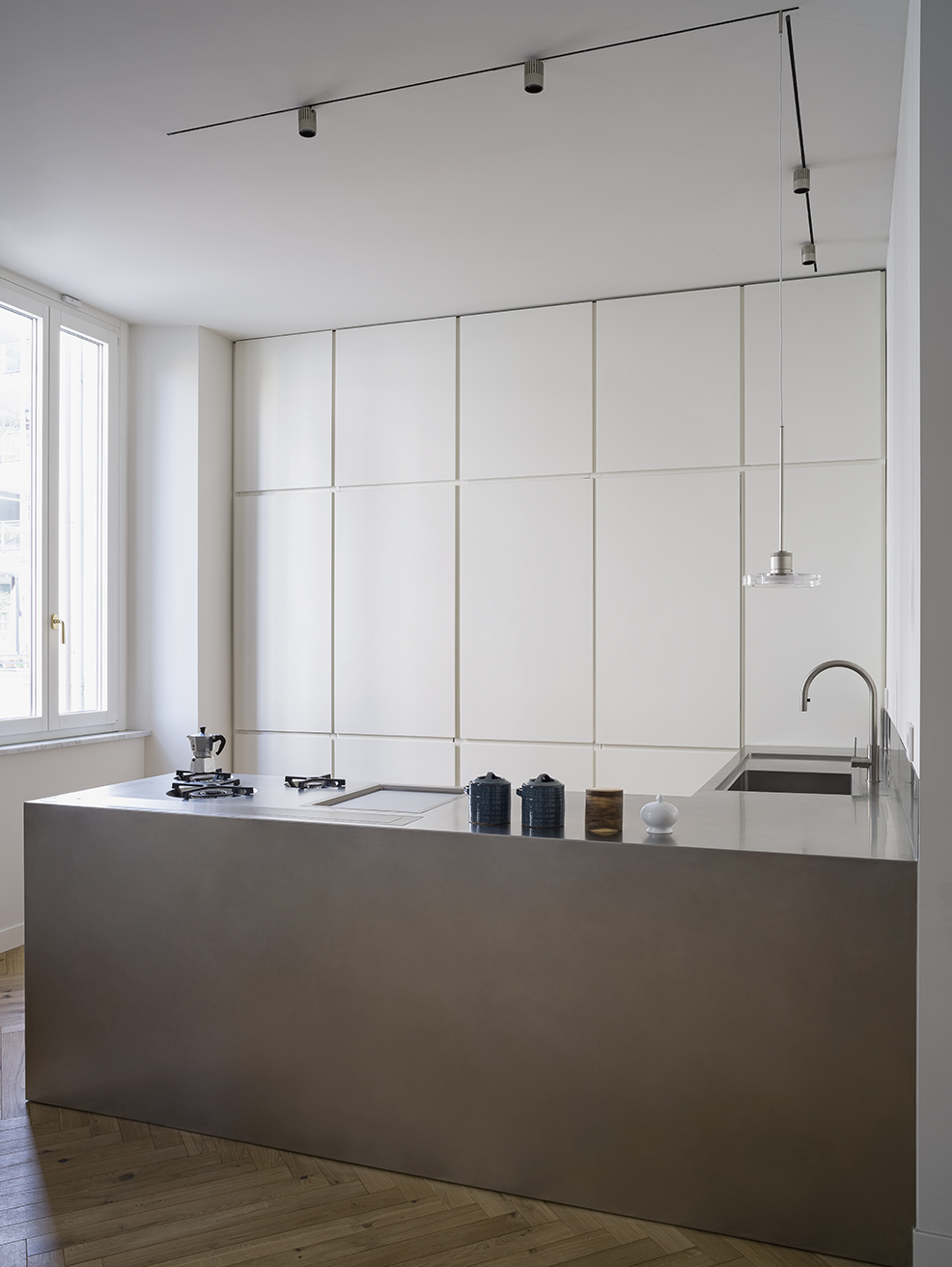
Corner kitchens: characteristics and benefits
Practical, ergonomic and space-saving. Corner kitchens prove to be among the most popular picks. Here is a guide to help you choose.
They are ergonomic. Meaning they optimise space in the best possible way. They give you the chance to create dynamic compositions. In short, corner kitchens have always been among the top types of kitchen layout.

Developed along two adjoining walls, corner kitchens (which some refer to also as “L-shaped kitchens”) are designed best to optimise the connection point between the two walls, which is usually not exploited to its full potential. This is why a corner kitchen is the ideal choice for small settings, where it is vital to use every single spare centimetre in the best possible way.

However, that doesn’t mean that corner kitchens are only suited to compact spaces. The corner kitchen configuration is suitable for any setting and all domestic styles. For a small attic or a spacious loft, for a kitchen in a separate room or an open-plan living space where the kitchen looks onto the lounge.

The reasons behind purchasing a corner kitchen are not only the desire best to exploit all the available space. Some people pick a corner kitchen because of the floor plan or the existing plumbing and wiring systems, others because they consider it to be a more practical solution, and others still purely for aesthetic styling.
Whatever the reason, there is no doubt that corner kitchens are, together with kitchens with an island, among the most popular and widespread choice.
So let’s look more closely at the characteristics and benefits of an L-shaped kitchen.
Corner kitchens make it possible to optimise all the available space, down to the nearest centimetre.
Optimising every centimetre available. As we were saying, this is one of the main reasons behind choosing a corner kitchen. The corner composition in fact allows you to exploit the point where the two adjoining walls meet and to furnish portions of the wall which would otherwise remain unused, such as the space under a window, for instance.

In corner kitchens, this “blind” spot can instead be utilised to create storage space or even transformed into a veritable operational station. What’s more, with corner compositions, one side of the kitchen can be extended towards the middle of the room, to become a practical peninsula or snack counter. One alternative to consider for those who prefer a more practical and informal solution or when you simply don’t have enough room for a dining table.

Corner kitchens are ergonomic.
Corner kitchens follow what is commonly referred to as the “golden triangle rule”. Vital when planning an ergonomic and functional kitchen, the golden triangle rule states that a kitchen’s three main work areas – the hob, the sink and the refrigerator – should form an imaginary triangle. The result? A genuine work triangle that allows the cook to move seamlessly among the food preservation, cooking and washing areas.

Thanks to the sequential layout of the functional areas and by respecting the proper distances, unnecessary movements are therefore kept to a minimum, making food preparation an easy task.
Corner kitchens are designed to create dynamic and creative compositions.
Corner kitchens can also be chosen purely for aesthetic styling reasons. Indeed, a corner kitchen can be used to create more dynamic compositions compared to a linear kitchen, playing also with colour and texture contrasts between the two adjoining walls.

But that’s not all. In kitchens with ample space or those that open onto the living room, corner compositions can also be turned into spectacular C-shaped kitchens. The perfect solution to create peninsulas and snack counters that can be used to divide visually the operational area from the sitting room.
How to furnish a corner kitchen
For a corner kitchen to be functional and ergonomic, it needs to be designed and planned rationally. Base units, tall units and wall units don’t only need to follow the corner, they need to ensure easy access to their contents. These days, there are several solutions to exploit the blind corners in a kitchen.
One way is to use carousel baskets, swivel tall units and pull-out trays.

Accessorising corner base units, tall units and wall units with fixed shelves would in fact make it extremely complicated, if not entirely impossible, to retrieve plates, crockery and food from the back of the cupboard.
Thanks to their telescopic runners and soft closing systems, carousel baskets and full-extraction systems instead grant you easy access to the corner, to retrieve what you need with the utmost ease while at the same time guaranteeing maximum hygiene and cleanliness in the kitchen.
Corner kitchens by Abimis

All corner kitchens by Abimis are tailor-made to make the most of every centimetre available. A small attic, a huge open-plan setting, a seaside home, a garden even. Whatever the setting and however large or small the available space, corner kitchens by Abimis are always entirely tailored to the needs of each individual customer.
In all Abimis kitchens (and not just the corner ones) the shelves can slide out completely. This innovative solution means all the available space can be exploited, making everything easily accessible and easier to clean. Abimis pull-out shelves can bear up to 30 kg and are fitted with a special soft-closing mechanism that attenuates noise.

All Abimis professionally-derived kitchens stem from a study of the chef’s movements around the kitchen and then breaking them down. This results in a kitchen that is designed according to the principles of ergonomics, where the 5 steps of cooking – preserving, preparing, cooking, dishing up and washing up – are straightforward and consequential. To offer the tools of the trade of star chefs to home cooks.

